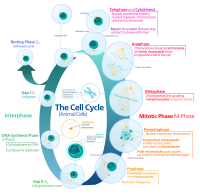
Rapid improvement of cognitive maps in the awake state
Sign Up to like & getrecommendations! Published in 2019 at "Hippocampus"
DOI: 10.1002/hipo.23081
Abstract: Post‐navigation awake quiescence, relative to task engagement, benefits the accuracy of a new “cognitive map”. This effect is hypothesized to reflect awake quiescence, like sleep, being conducive to the consolidation and integration of new spatial… read more here.
Keywords: whose memory; awake quiescence; quiescence; map accuracy ... See more keywords

An In Vitro Model of Cellular Quiescence in Primary Human Dermal Fibroblasts.
Sign Up to like & getrecommendations! Published in 2018 at "Methods in molecular biology"
DOI: 10.1007/978-1-4939-7371-2_2
Abstract: Cellular quiescence is a reversible mode of cell cycle exit that allows cells and organisms to withstand unfavorable stress conditions. The factors that underlie the entry, exit, and maintenance of the quiescent state are crucial… read more here.
Keywords: human dermal; vitro model; quiescence; model cellular ... See more keywords

In vitro induction of quiescence in isolated primary human myoblasts
Sign Up to like & getrecommendations! Published in 2020 at "Cytotechnology"
DOI: 10.1007/s10616-019-00365-8
Abstract: Adult skeletal muscle stem cells, satellite cells, remain in an inactive or quiescent state in vivo under physiological conditions. Progression through the cell cycle, including activation of quiescent cells, is a tightly regulated process. Studies… read more here.
Keywords: human myoblasts; quiescence; induction quiescence; vitro induction ... See more keywords

Metabolic switches from quiescence to growth in synchronized Saccharomyces cerevisiae
Sign Up to like & getrecommendations! Published in 2019 at "Metabolomics"
DOI: 10.1007/s11306-019-1584-4
Abstract: The switch from quiescence (G0) into G1 and cell cycle progression critically depends on specific nutrients and metabolic capabilities. Conversely, metabolic networks are regulated by enzyme–metabolite interaction and transcriptional regulation that lead to flux modifications… read more here.
Keywords: saccharomyces cerevisiae; cell; quiescence; flux ... See more keywords

Neighboring cells override 3D hydrogel matrix cues to drive human MSC quiescence
Sign Up to like & getrecommendations! Published in 2018 at "Biomaterials"
DOI: 10.1016/j.biomaterials.2018.05.032
Abstract: Physical properties of modifiable hydrogels can be tuned to direct stem cell differentiation in a role akin to that played by the extracellular matrix in native stem cell niches. However, stem cells do not respond… read more here.
Keywords: neighboring cells; quiescence; matrix; matrix cues ... See more keywords

Hematopoietic versus leukemic stem cell quiescence: Challenges and therapeutic opportunities.
Sign Up to like & getrecommendations! Published in 2021 at "Blood reviews"
DOI: 10.1016/j.blre.2021.100850
Abstract: Hematopoietic stem cells (HSC) are responsible for the production of mature blood cells. To ensure that the HSC pool does not get exhausted over the lifetime of an individual, most HSCs are in a state… read more here.
Keywords: quiescence; hematopoietic versus; versus leukemic; stem cell ... See more keywords

Niche Cadherins Control the Quiescence-to-Activation Transition in Muscle Stem Cells.
Sign Up to like & getrecommendations! Published in 2017 at "Cell reports"
DOI: 10.1016/j.celrep.2017.10.102
Abstract: Many adult stem cells display prolonged quiescence, promoted by cues from their niche. Upon tissue damage, a coordinated transition to the activated state is required because non-physiological breaks in quiescence often lead to stem cell… read more here.
Keywords: transition; quiescence; activation; niche ... See more keywords

The Translational Machinery of Human CD4+ T Cells Is Poised for Activation and Controls the Switch from Quiescence to Metabolic Remodeling.
Sign Up to like & getrecommendations! Published in 2018 at "Cell metabolism"
DOI: 10.1016/j.cmet.2018.08.009
Abstract: Naive T cells respond to T cell receptor (TCR) activation by leaving quiescence, remodeling metabolism, initiating expansion, and differentiating toward effector T cells. The molecular mechanisms coordinating the naive to effector transition are central to the functioning of… read more here.
Keywords: translational machinery; quiescence; human cd4; machinery human ... See more keywords

HLH-30/TFEB Is a Master Regulator of Reproductive Quiescence.
Sign Up to like & getrecommendations! Published in 2020 at "Developmental cell"
DOI: 10.1016/j.devcel.2020.03.014
Abstract: All animals have evolved the ability to survive nutrient deprivation, and nutrient signaling pathways are conserved modulators of health and disease. In C. elegans, late-larval starvation provokes the adult reproductive diapause (ARD), a long-lived quiescent state… read more here.
Keywords: quiescence; regulator reproductive; reproductive quiescence; master regulator ... See more keywords

Mechanical instability of adherens junctions overrides intrinsic quiescence of hair follicle stem cells.
Sign Up to like & getrecommendations! Published in 2021 at "Developmental cell"
DOI: 10.1016/j.devcel.2021.02.020
Abstract: Vinculin, a mechanotransducer associated with both adherens junctions (AJs) and focal adhesions (FAs), plays a central role in force transmission through cell-cell and cell-substratum contacts. We generated the conditional knockout (cKO) of vinculin in murine… read more here.
Keywords: vinculin; quiescence; hair; adherens junctions ... See more keywords

Proliferative stem cells maintain quiescence of their niche by secreting the Activin inhibitor Follistatin
Sign Up to like & getrecommendations! Published in 2021 at "Developmental Cell"
DOI: 10.1016/j.devcel.2021.07.010
Abstract: Summary Aging causes stem cell dysfunction as a result of extrinsic and intrinsic changes. Decreased function of the stem cell niche is an important contributor to this dysfunction. We use the Drosophila testis to investigate… read more here.
Keywords: cell; quiescence; hub; niche ... See more keywords